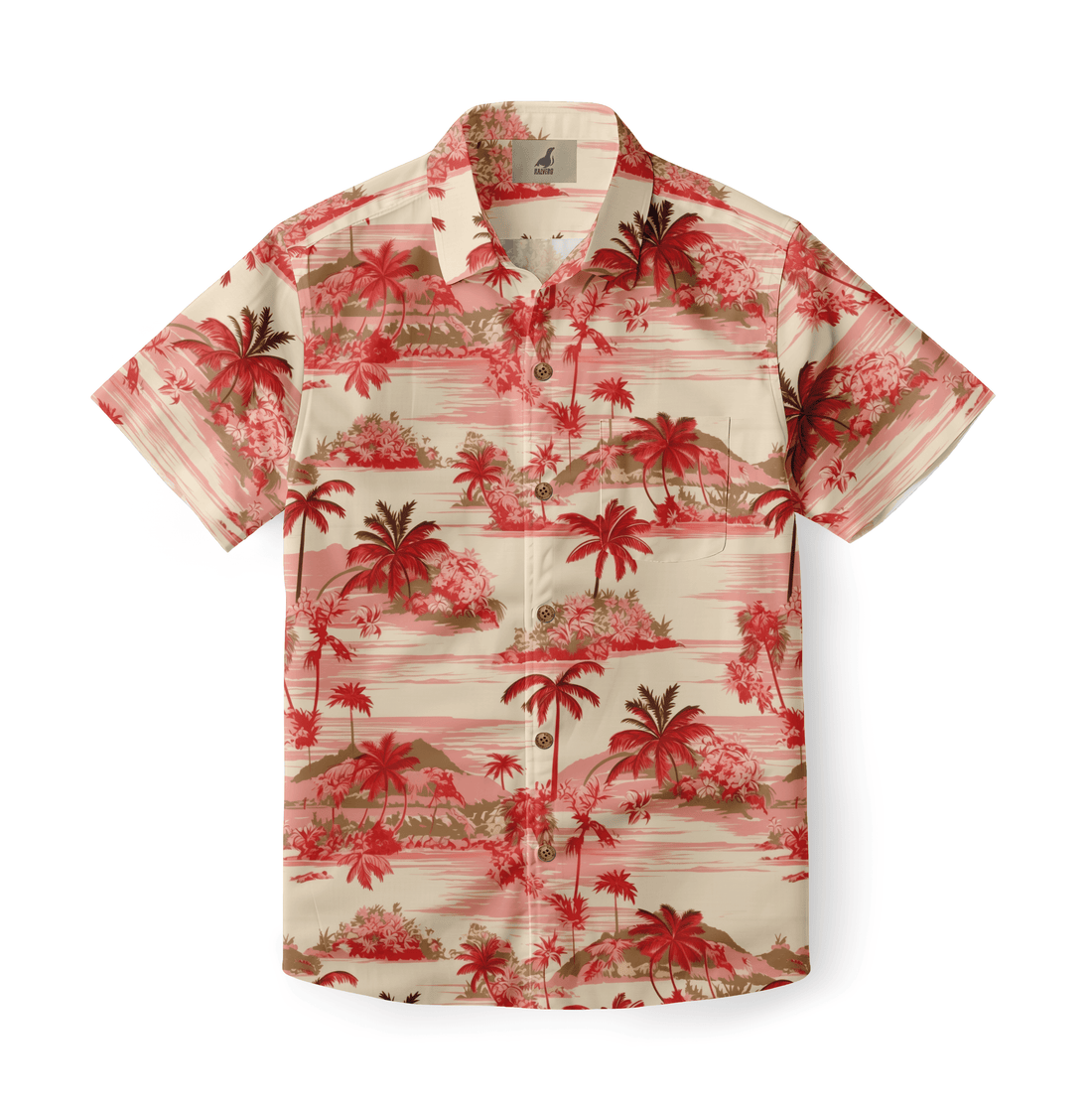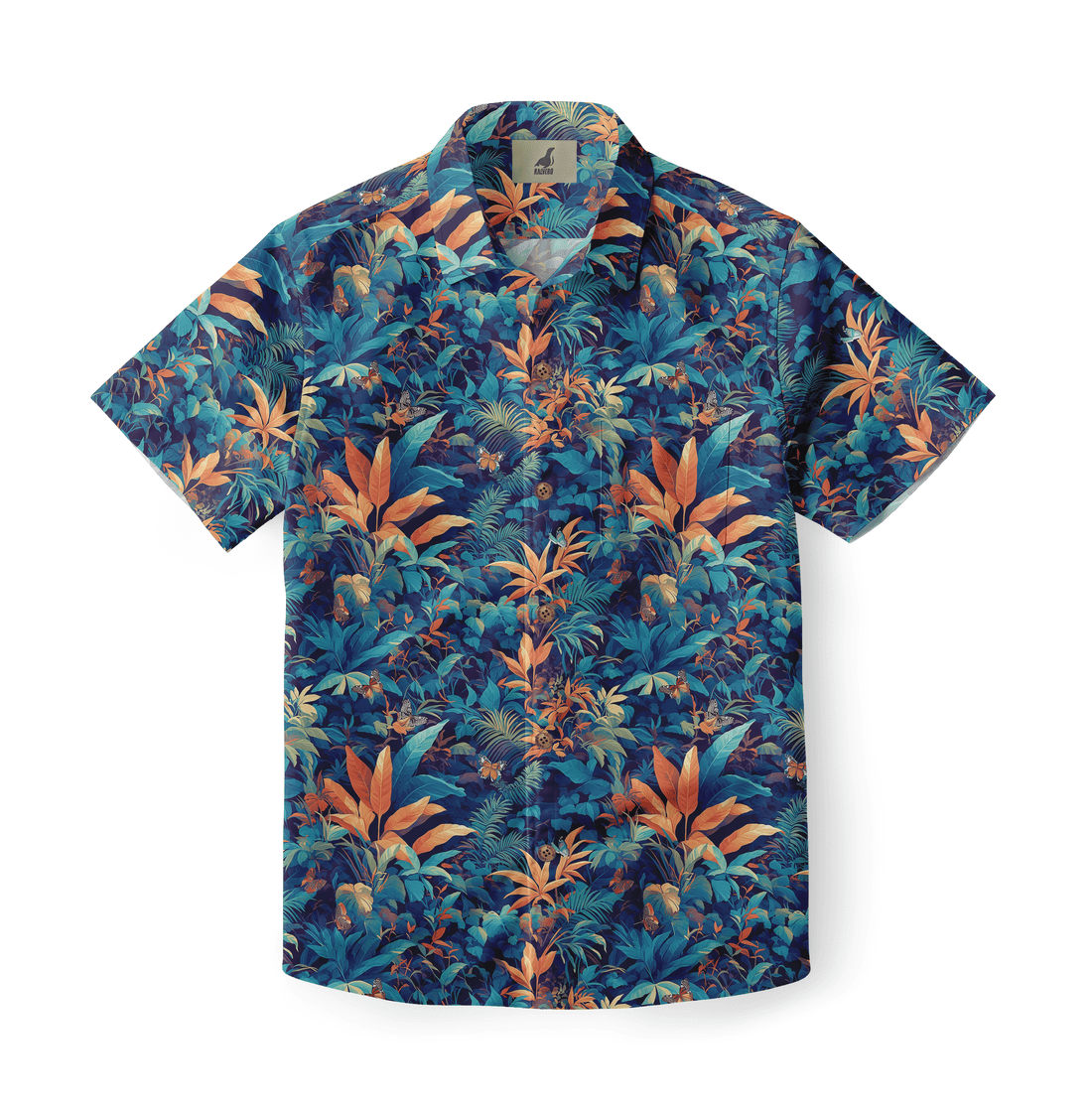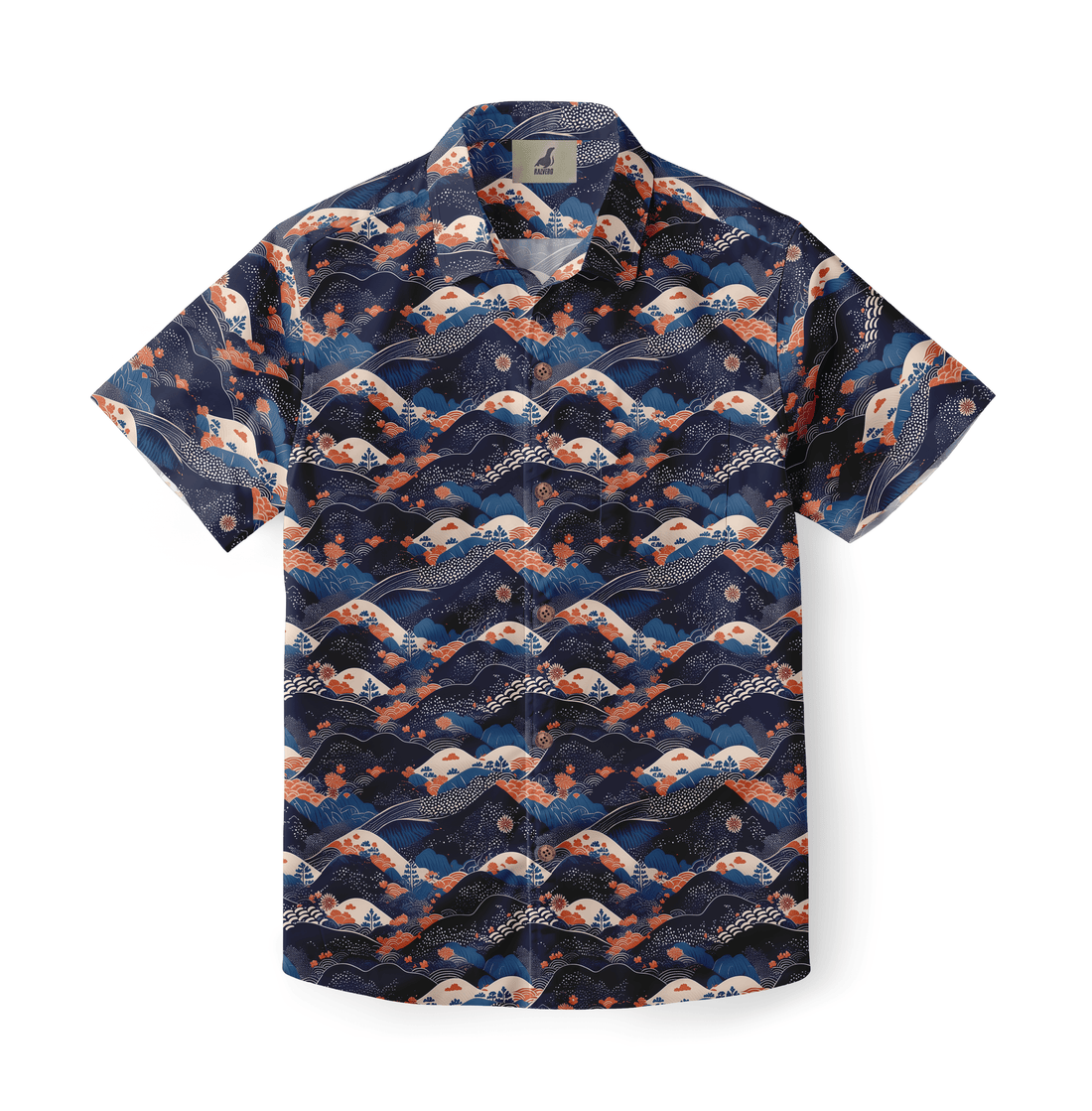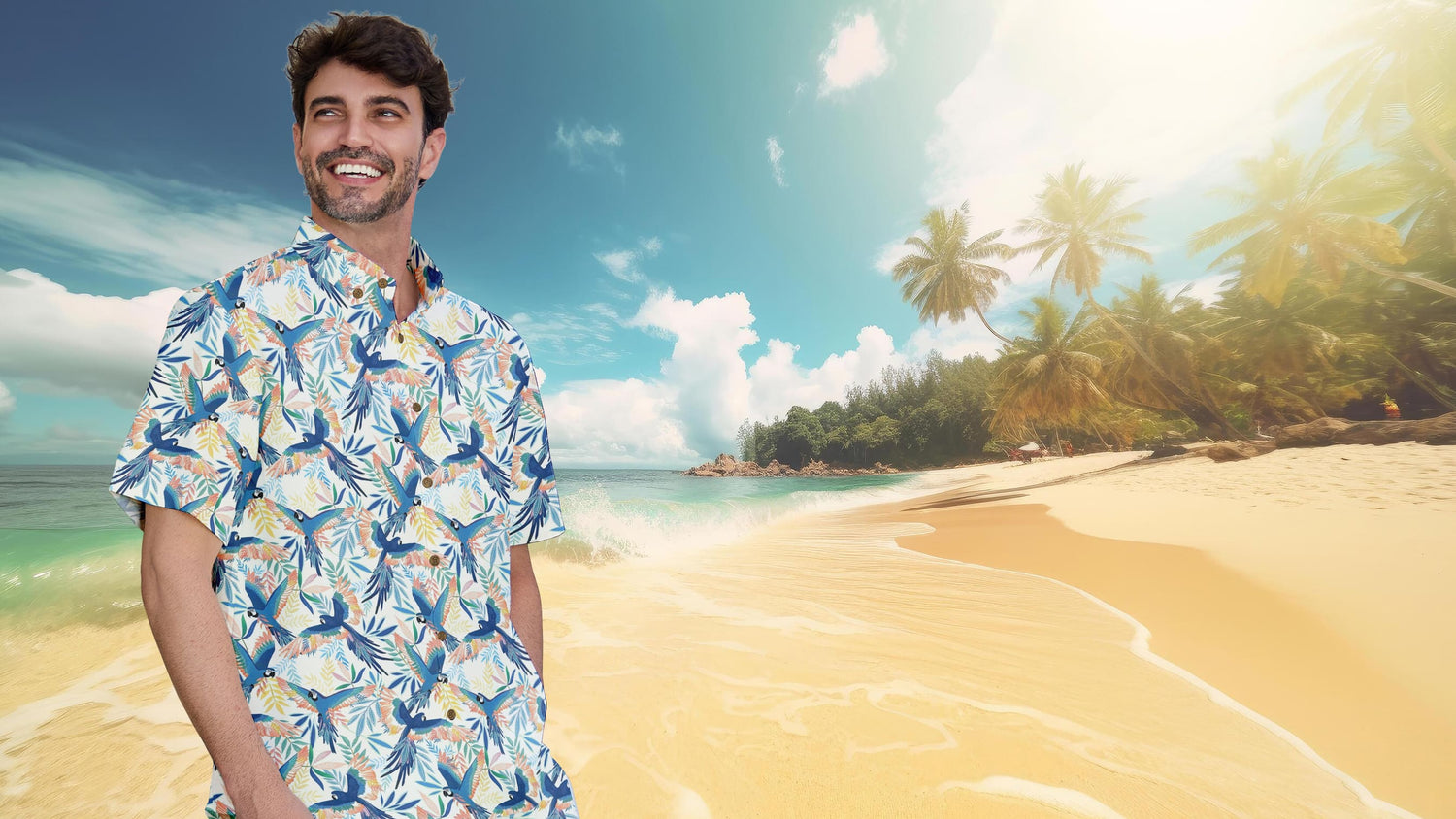Hawaiian shirts, with their vibrant patterns and relaxed silhouettes, have transcended mere clothing to become an iconic representation of warm weather, leisure, and carefree living. This article explores the fascinating journey of why Hawaiian shirts became a symbol of summer and relaxation, tracing their origins, cultural evolution, and enduring appeal. From their humble beginnings in the Hawaiian Islands to their global recognition, these distinctive garments embody a spirit of escapism and joy. Their unique blend of comfort, bold aesthetics, and historical significance has cemented their place in popular culture as the quintessential attire for sunny days and laid-back moments. Understanding this transformation reveals more than just a fashion trend; it uncovers a deep connection between clothing and the human desire for freedom and tranquility.
Why Hawaiian Shirts Became a Symbol of Summer and Relaxation: Historical Origins
To truly understand why Hawaiian shirts became a symbol of summer and relaxation, one must delve into their rich historical origins. These iconic garments, originally known as Aloha shirts, emerged in Hawaii during the 1930s. Their creation was a fusion of diverse cultural influences, including Japanese kimono fabrics, Filipino barong tagalog designs, and traditional Polynesian patterns. Local tailors and merchants began crafting these unique shirts for both residents and the growing number of tourists visiting the islands.
Early designs often featured vibrant prints depicting local flora, fauna, and scenic landscapes, instantly distinguishing them from mainland attire. This early adoption by both locals and visitors laid the groundwork for their future as a global symbol. The comfortable, loose-fitting style was perfectly suited for the tropical climate, offering a practical yet stylish alternative to more formal wear. This blend of comfort, local artistry, and practicality was fundamental to their initial appeal and set the stage for their eventual symbolic status. The authentic connection to the islands' laid-back lifestyle was woven into the very fabric of these shirts from the beginning.
The Rise of Tropical Fashion in Mainland America
The journey of why Hawaiian shirts became a symbol of summer and relaxation extends beyond the islands to their enthusiastic adoption on the American mainland. The post-World War II era played a crucial role in this expansion. Returning servicemen, having experienced the relaxed lifestyle and comfortable attire of Hawaii, brought Aloha shirts back with them as souvenirs and everyday wear. This organic spread introduced the vibrant garments to a wider audience, sparking curiosity and a desire for a piece of the tropical paradise. Simultaneously, Hollywood began to feature Hawaiian shirts in films and on celebrities, further cementing their exotic appeal.
Stars like Elvis Presley and Frank Sinatra were frequently photographed in these shirts, instantly elevating their status from regional novelty to a coveted fashion item. This exposure created a powerful association with leisure, travel, and a carefree lifestyle, making them highly desirable for a population eager to embrace new freedoms and experiences. The burgeoning tourism industry also played a part, as more Americans traveled to Hawaii and brought back the shirts as tangible memories of their relaxed vacations. This combination of grassroots adoption, celebrity endorsement, and a growing fascination with tropical destinations propelled the Hawaiian shirt into the mainstream, solidifying its place as a quintessential summer fashion statement across the nation.
Post-War Tourism and Vacation Culture
The boom in post-war tourism significantly contributed to why Hawaiian shirts became a symbol of summer and relaxation. With increased prosperity and the advent of more accessible air travel, Hawaii transformed into a dream vacation destination for many Americans. Tourists flocked to the islands, seeking an escape from the mundane routines of everyday life. The Hawaiian shirt, with its vibrant patterns and comfortable fit, perfectly encapsulated the spirit of this newfound leisure and exotic adventure. It became the unofficial uniform of the vacationer, a tangible souvenir that allowed individuals to carry a piece of their tropical getaway back home.
Wearing a Hawaiian shirt after returning from a trip served as a visual declaration of having experienced paradise, evoking memories of sun-drenched beaches and relaxed days. This strong association with holidays and carefree living further cemented its symbolic status. The shirt was not just clothing; it was a narrative, a reminder of freedom and enjoyment. This direct link between the garment and the aspirational vacation lifestyle deeply embedded the Hawaiian shirt into the collective consciousness as a powerful emblem of summer and relaxation, making it an indispensable part of the vacation wardrobe for generations to come. The desire to capture that holiday feeling at home fueled its widespread adoption.
Why Hawaiian Shirts Became a Symbol of Summer and Relaxation: Celebrity Influence
Celebrity influence has played an undeniable role in solidifying why Hawaiian shirts became a symbol of summer and relaxation. Throughout the mid-20th century, Hollywood stars and public figures were frequently photographed wearing these vibrant garments, both on and off screen. Icons like Elvis Presley, with his memorable Hawaiian shirts in films such as "Blue Hawaii," and Frank Sinatra, often seen in relaxed aloha wear, projected an image of effortless cool and tropical allure. These endorsements transformed the Hawaiian shirt from a regional novelty into a global fashion statement. When beloved celebrities embraced the style, it lent an air of sophistication and desirability, making the shirts aspirational for the general public. Their appearances in magazines, movies, and television shows created a powerful visual association between the shirts and a glamorous, carefree lifestyle.
This continuous exposure through popular culture cemented the Hawaiian shirt's image as the epitome of vacation chic and relaxed elegance. The public, eager to emulate their idols, sought out these shirts, further embedding them into the fabric of summer fashion. This powerful endorsement by cultural trendsetters was instrumental in elevating the Hawaiian shirt to its iconic status, making it synonymous with the warmth, freedom, and leisurely pace of summer. The visual impact of these figures in Hawaiian shirts was profound, shaping perceptions and driving demand for decades.
The Psychology of Tropical Patterns and Colors
The inherent visual appeal of Hawaiian shirts, characterized by their tropical patterns and vibrant colors, plays a significant psychological role in why Hawaiian shirts became a symbol of summer and relaxation. These designs are not merely decorative; they evoke specific emotions and associations that contribute to the shirt's symbolic power. The use of bright hues and natural motifs taps into our innate connection with nature and positive sensory experiences. This visual language communicates a sense of joy, freedom, and escape, instantly transporting the wearer and observer to an idyllic, sun-drenched paradise. The patterns often feature elements like palm trees, hibiscus flowers, ocean waves, and exotic birds, all universally recognized symbols of tropical environments. This direct visual link bypasses conscious thought, immediately triggering feelings of warmth, vacation, and tranquility. The psychological impact of these designs is a powerful, often subconscious, reason for their enduring association with summer and relaxation.
- Vibrancy and Energy: Bright colors like fuchsia, turquoise, and sunny yellow are associated with energy, happiness, and optimism. These hues stimulate positive emotions and create a lively, festive atmosphere, perfectly aligning with the spirit of summer celebrations.
- Natural Motifs: Patterns featuring flora and fauna from tropical regions (e.g., palm leaves, hibiscus, pineapples, exotic birds) connect us to nature and evoke a sense of peace, growth, and natural beauty. This connection fosters a feeling of being on vacation or in a serene environment.
- Escapism and Freedom: The imagery on Hawaiian shirts often represents idyllic landscapes, such as beaches, sunsets, and ocean scenes. These visuals trigger a sense of escapism, allowing the wearer to mentally transport themselves to a place of freedom and relaxation, away from daily stresses.
- Playfulness and Non-Conformity: The bold and often whimsical nature of Hawaiian shirt patterns suggests a playful attitude and a willingness to step outside conventional fashion norms. This appeals to individuals seeking to express their carefree side and embrace a more relaxed approach to life.
This combination of vibrant colors and natural, escapist imagery creates a powerful psychological effect, making the Hawaiian shirt more than just an item of clothing. It becomes a wearable mood, a statement of intent to embrace leisure and joy. The visual cues embedded in each design reinforce its status as a symbol of summer and relaxation, making it an instant classic for anyone seeking to embody that carefree spirit. The immediate positive association generated by these patterns is a fundamental aspect of their enduring appeal and why Hawaiian shirts became a symbol of summer and relaxation for so many people across the globe. They offer a tangible connection to the aspirational lifestyle of tropical getaways, even when worn far from the beach.
Fabric and Design Elements That Define Summer Comfort
Beyond their visual appeal, the material and design elements of Hawaiian shirts are intrinsically linked to why Hawaiian shirts became a symbol of summer and relaxation. The choice of fabrics and the characteristic loose fit are specifically engineered for comfort in warm climates, making them ideal for leisurely summer days. This focus on practicality and ease of wear has been a consistent factor in their enduring popularity, distinguishing them from more restrictive forms of attire. The very construction of these shirts speaks to a desire for freedom and comfort, which are hallmarks of a relaxed summer experience.
| Element | Description | Contribution to Summer/Relaxation Symbolism |
|---|---|---|
| Fabric (Rayon, Cotton, Silk) | Lightweight, breathable, and soft materials that allow for air circulation and moisture wicking. | Provides physical comfort in heat, enhancing the feeling of ease and leisure. |
| Loose Fit | Generous cut that prevents clinging to the body, promoting airflow and unrestricted movement. | Embodies a carefree attitude, freedom from formal constraints, and a relaxed silhouette. |
| Short Sleeves | Allows for maximum arm movement and reduces heat retention. | Practical for warm weather activities, reinforcing the casual, active summer vibe. |
| Open Collar | Often a camp collar or Cuban collar, designed to be worn open for comfort and a laid-back look. | Contributes to the informal, unbuttoned aesthetic associated with vacation and relaxation. |
This table illustrates how specific fabric and design choices contribute to the Hawaiian shirt's status as a symbol of summer and relaxation. The primary materials used, such as rayon, cotton, and silk, are chosen for their excellent breathability and lightweight properties, which are crucial for comfort in hot and humid conditions. Rayon, in particular, drapes beautifully and feels cool against the skin, making it a favorite for authentic Hawaiian shirts. The loose, boxy fit is another defining characteristic, allowing for unrestricted movement and preventing the fabric from clinging to the body, which is essential for staying cool.
This design choice inherently promotes a sense of ease and freedom, aligning perfectly with the relaxed atmosphere of summer holidays. Short sleeves and an open collar further enhance this comfort, making the shirt practical for various summer activities and contributing to its laid-back aesthetic. These thoughtful design elements ensure that the Hawaiian shirt is not just visually appealing but also supremely comfortable, making it the ideal garment for embodying the spirit of summer and relaxation. The combination of these features creates a garment that is both functional and symbolic, perfectly capturing the essence of a carefree summer lifestyle.
Why Hawaiian Shirts Became a Symbol of Summer and Relaxation: Media and Pop Culture
Beyond their historical roots and inherent design, the pervasive influence of media and pop culture has been instrumental in cementing why Hawaiian shirts became a symbol of summer and relaxation. From classic films to modern television shows and music videos, these shirts have consistently appeared in contexts that reinforce their association with leisure, fun, and idyllic settings. This continuous visual reinforcement has deeply embedded the Hawaiian shirt into the collective consciousness as an emblem of carefree living. The power of visual storytelling in media creates a strong emotional connection, making the garment more than just clothing but a narrative device.
Hollywood, in particular, played a pivotal role. Movies set in tropical locations often featured protagonists or supporting characters sporting Hawaiian shirts, instantly linking the attire to exotic adventures and relaxed lifestyles. Think of iconic scenes where characters are enjoying a vacation, solving mysteries on an island, or simply living a laid-back existence – a Hawaiian shirt was often part of their wardrobe. This cinematic presence created an aspirational image, suggesting that wearing such a shirt was a gateway to experiencing similar freedoms and joys. Television series, especially those set in sunny locales, further amplified this image.
Even in music, album covers and music videos often depicted artists in Hawaiian shirts, particularly those associated with surf rock, reggae, or easy-listening genres, reinforcing the connection to summer vibes and relaxed rhythms. This consistent portrayal across various forms of media has ensured that the Hawaiian shirt remains a powerful visual shorthand for summer, holidays, and a general sense of ease. The cultural narrative woven by pop culture has been a crucial factor in solidifying the Hawaiian shirt's symbolic status, making it instantly recognizable and evocative of a specific mood and lifestyle. This continuous exposure ensures its place in the pantheon of summer fashion icons.
The Evolution of Casual Dress Codes
The broader societal shift towards more casual dress codes has also significantly contributed to why Hawaiian shirts became a symbol of summer and relaxation. In the mid-20th century, as workplaces and social settings gradually relaxed their stringent sartorial rules, there was a growing demand for comfortable yet stylish attire. The Hawaiian shirt, with its inherent ease and vibrant aesthetic, perfectly fit this evolving need. It offered a refreshing alternative to the more formal suits and ties that dominated professional and social landscapes. This loosening of dress codes allowed for greater personal expression and a more relaxed approach to daily life, aligning perfectly with the carefree image projected by the Hawaiian shirt.
The concept of "Aloha Friday," where employees in Hawaii were encouraged to wear Aloha shirts to work, further popularized the idea of casual comfort in professional settings, eventually spreading to the mainland. This cultural phenomenon underscored the shirt's ability to bridge the gap between formal and informal wear, making it acceptable in a wider range of environments. As society embraced a more laid-back attitude, the Hawaiian shirt naturally rose in prominence, becoming a go-to garment for those seeking both comfort and a touch of personality. This evolution in dress codes provided the perfect environment for the Hawaiian shirt to flourish, solidifying its status as a symbol of relaxed living and summer ease. The move away from rigid formality allowed the inherent comfort and expressive nature of the Hawaiian shirt to truly shine.
Modern Interpretations and Contemporary Appeal
Even as decades pass, the question of why Hawaiian shirts became a symbol of summer and relaxation remains relevant due to their continuous modern interpretations and contemporary appeal. Far from being relegated to a vintage curiosity, designers and fashion enthusiasts constantly reinterpret the Hawaiian shirt, ensuring its enduring relevance in today's dynamic fashion landscape. This adaptability allows the shirt to evolve with changing tastes while retaining its core identity. The ability to seamlessly integrate into current trends is crucial for any garment to maintain its iconic status.
Contemporary fashion has embraced the Hawaiian shirt, incorporating it into diverse styles ranging from streetwear to high fashion. Modern interpretations often feature updated cuts, such as slimmer fits or oversized silhouettes, and a broader range of patterns that include abstract designs, geometric prints, and even minimalist versions. The fabric choices have also expanded, with sustainable materials and innovative blends offering new textures and drapes.
Fashion influencers and celebrities continue to showcase the versatility of Hawaiian shirts, pairing them with unexpected items like tailored trousers, sneakers, or layered over hoodies, demonstrating their adaptability beyond traditional beachwear. This constant reinvention ensures that the Hawaiian shirt remains fresh and appealing to new generations, preventing it from becoming a relic of the past. Its ability to blend nostalgia with contemporary trends allows it to transcend seasonal fads and maintain its status as a timeless symbol of summer and relaxation. The ongoing creativity in its design and styling ensures its continued presence in wardrobes worldwide, proving that a classic can always be reimagined for the modern era.
Seasonal Marketing and Fashion Industry Impact
The strategic efforts of seasonal marketing and the fashion industry have also played a significant role in reinforcing why Hawaiian shirts became a symbol of summer and relaxation. Each year, as warmer months approach, fashion brands and retailers launch campaigns that prominently feature tropical prints and resort wear, with Hawaiian shirts often taking center stage. This consistent marketing push creates a strong seasonal association, reminding consumers of the shirt's connection to holidays, vacations, and carefree summer days. The industry capitalizes on the aspirational lifestyle linked to these garments, promoting them as essential components of a summer wardrobe.
This deliberate positioning ensures that the Hawaiian shirt remains top-of-mind when individuals are planning their summer activities and seeking appropriate attire. The cyclical nature of fashion trends, combined with targeted advertising, continually reintroduces the Hawaiian shirt to new generations and reinforces its symbolic meaning for existing consumers. This commercial reinforcement helps to maintain its status as a quintessential summer item, ensuring its presence in storefronts and online catalogs every season. The fashion industry's ability to consistently market and re-contextualize the Hawaiian shirt has been crucial in solidifying its iconic status as a symbol of summer and relaxation, making it an enduring part of the seasonal fashion landscape.
Global Adoption and Cultural Significance
The journey of why Hawaiian shirts became a symbol of summer and relaxation culminates in their global adoption and profound cultural significance. What began as a regional garment in the Hawaiian Islands has transcended geographical boundaries to become a universally recognized emblem of leisure and tropical allure. This widespread acceptance speaks to the shirt's powerful ability to evoke a sense of freedom and escape, resonating with people across diverse cultures and climates. The Hawaiian shirt has become a sartorial shorthand for vacation, good times, and a relaxed state of mind, regardless of where it is worn.
Its cultural significance extends beyond mere fashion. In many parts of the world, wearing a Hawaiian shirt is an act of embracing a carefree attitude, a subtle rebellion against the rigidities of formal wear. It represents a desire for comfort and a connection to the natural world, embodying the spirit of aloha – a concept encompassing love, peace, compassion, and hospitality. This deeper meaning, often subconsciously understood, contributes to its enduring appeal. From beach towns in Australia to bustling cities in Europe, the Hawaiian shirt serves as a visual reminder of summer's warmth and the joy of relaxation. Its global presence in film, music, and art further solidifies its status as a cultural icon. The Hawaiian shirt's ability to evoke a universal feeling of happiness and ease ensures its continued relevance and popularity, making it a truly global symbol of summer and relaxation that transcends its origins to become a shared cultural touchstone.
Frequently Asked Questions
What is the origin of the Hawaiian shirt?
The Hawaiian shirt, also known as the Aloha shirt, originated in Hawaii in the 1930s. It was initially created by local tailors and merchants, often using leftover kimono fabrics and incorporating designs inspired by various Polynesian and Asian cultures. Its comfortable, loose fit and vibrant patterns quickly made it popular among both residents and tourists, laying the foundation for its iconic status as a symbol of the islands.
How did Hawaiian shirts become associated with relaxation?
Hawaiian shirts became associated with relaxation primarily through their adoption by tourists visiting Hawaii, especially after World War II. As air travel became more accessible, Hawaii became a popular vacation destination, and the shirts served as tangible souvenirs of a carefree, leisurely holiday. Celebrity endorsements in films and media further cemented this image, linking the shirts to idyllic settings and a relaxed lifestyle, making them a visual shorthand for summer and leisure.
Are Hawaiian shirts still considered fashionable today?
Yes, Hawaiian shirts are very much still considered fashionable today. They have experienced several resurgences in popularity, particularly in recent years, driven by a renewed interest in vintage styles, gender-neutral fashion, and the desire for comfortable yet expressive clothing. Modern interpretations feature updated cuts and diverse patterns, and they are frequently seen on runways, in pop culture, and styled in contemporary ways by fashion influencers, ensuring their continued relevance and appeal.








